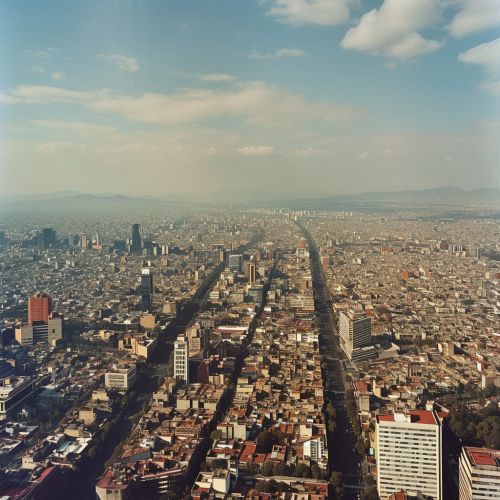Mexico City
Geography
Mexico City, officially known as Ciudad de México, is the capital of Mexico and the most populous city in North America. It is located in the Valley of Mexico (Valle de México), a large valley in the high plateaus in the center of Mexico, at an altitude of 2,240 meters (7,350 ft).

History
Mexico City's history spans over two millennia, with the region being inhabited as early as 1325 when the Aztecs founded the city of Tenochtitlán on an island in Lake Texcoco. The city was almost completely destroyed in the 1521 Siege of Tenochtitlán by Spanish conquerors. It was subsequently rebuilt according to Spanish urban standards and renamed Mexico City.
Demographics
As of 2020, Mexico City has a population of over 9 million people, making it the most populous city in North America. The Greater Mexico City metropolitan area is home to over 21 million people, making it the largest metropolitan area in the Western Hemisphere.
Economy
Mexico City is one of the most important economic hubs in Latin America. The city proper (the "Federal District") produces 15.8% of the country's gross domestic product. According to a 2008 PricewaterhouseCoopers study, Mexico City had a GDP of $390 billion, ranking it the eighth richest city in the world after the greater areas of Tokyo, New York, Los Angeles, Chicago, Paris, London and Osaka/Kobe, and the richest in Latin America.
Culture
Mexico City is known for its rich culture and history. It is home to numerous museums, art galleries, and theaters. The city's historic center, known as the "Centro Histórico," is a UNESCO World Heritage Site and includes notable landmarks such as the Zócalo, the Metropolitan Cathedral, and the National Palace.
Education
Mexico City is the educational hub of Mexico, with numerous universities, colleges, and research institutions. The National Autonomous University of Mexico (UNAM), one of the top universities in Latin America, is located in the city.
Transportation
Mexico City is served by a comprehensive public transportation network, which includes the Mexico City Metro, one of the largest and busiest subway systems in the world. The city is also home to the Mexico City International Airport, Latin America's busiest airport by passenger traffic.
